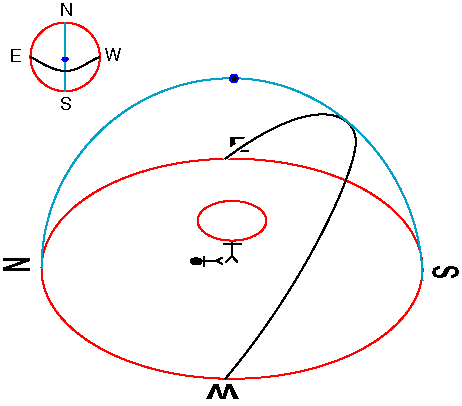

Sky maps are designed so that when held over your head and aligned with north, the stars in the sky match the stars on the map. On the sky map the horizon is the the circular edge where the stars stop, and zenith (the point directly overhead) is at the center of the sky map. The line in the sky from the north point on the horizon, through zenith, and on to the south point on the horizon is called the meridian.
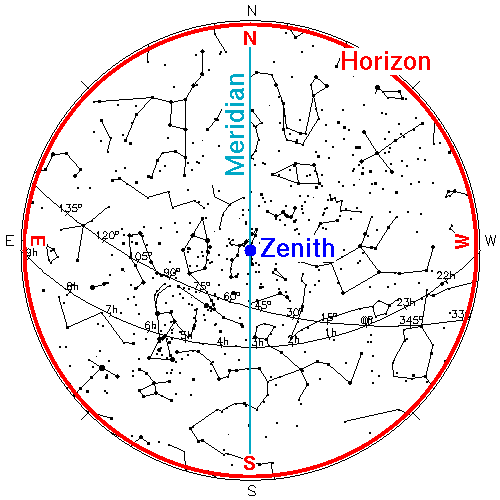
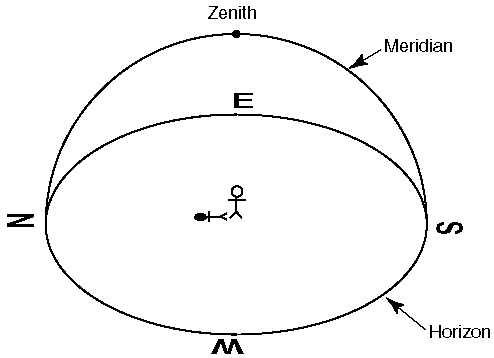
Notice that east and west in the sky (and hence on the sky map) are reversed compared to how they are usually presented on Earth maps. Earth maps are thought of as looking down on the globe, and of course, sky maps are designed to be used looking up at the sky. This reversal in direction-of-view results in the reversal of east and west. Notice that if you are looking at the sky facing south, east will be on your left exactly as it is displayed on the sky map.
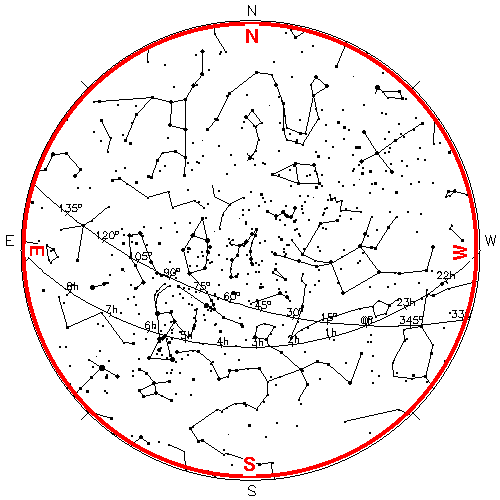
If you are not using the sky map to view stars near zenith and instead are looking at stars near the horizon, it is useful to re-orient the sky map so that the horizon on the map corresponds to the horizon you are looking at. For example, if you were turned west looking at the last faint bits of a sunset, you would want to orient your sky map as below, so the stars directly above the western horizon were directly above the bottom horizon on the map:
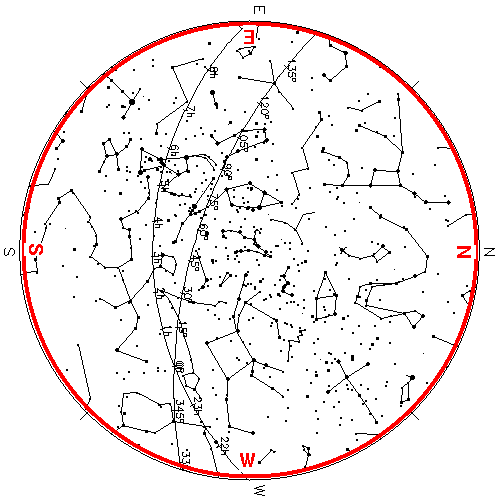
That is, put the map's western horizon down! Notice that if you're facing west, north will be to your right exactly as on the sky map.
If you want to look at the stars near the "Big Dipper", find the Big Dipper on the sky map and put the horizon nearest the Dipper down. Now the stars you see above the horizon in the direction of the Dipper, will be arranged as on the map.
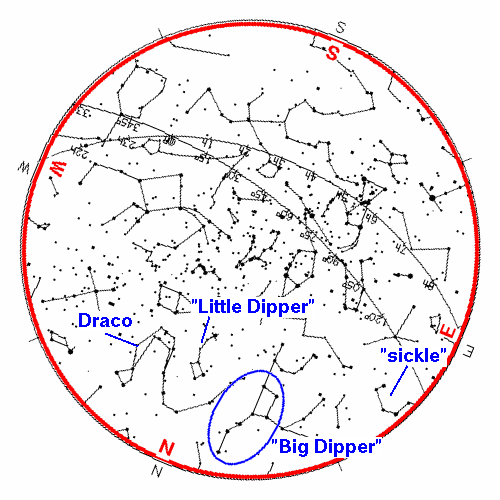
Notice that on this rotated sky map Draco and the Little Dipper are to the left of the Big Dipper, and the rising "sickle" of Leo is to the right of the Big Dipper. It will be exactly the same way in the sky.